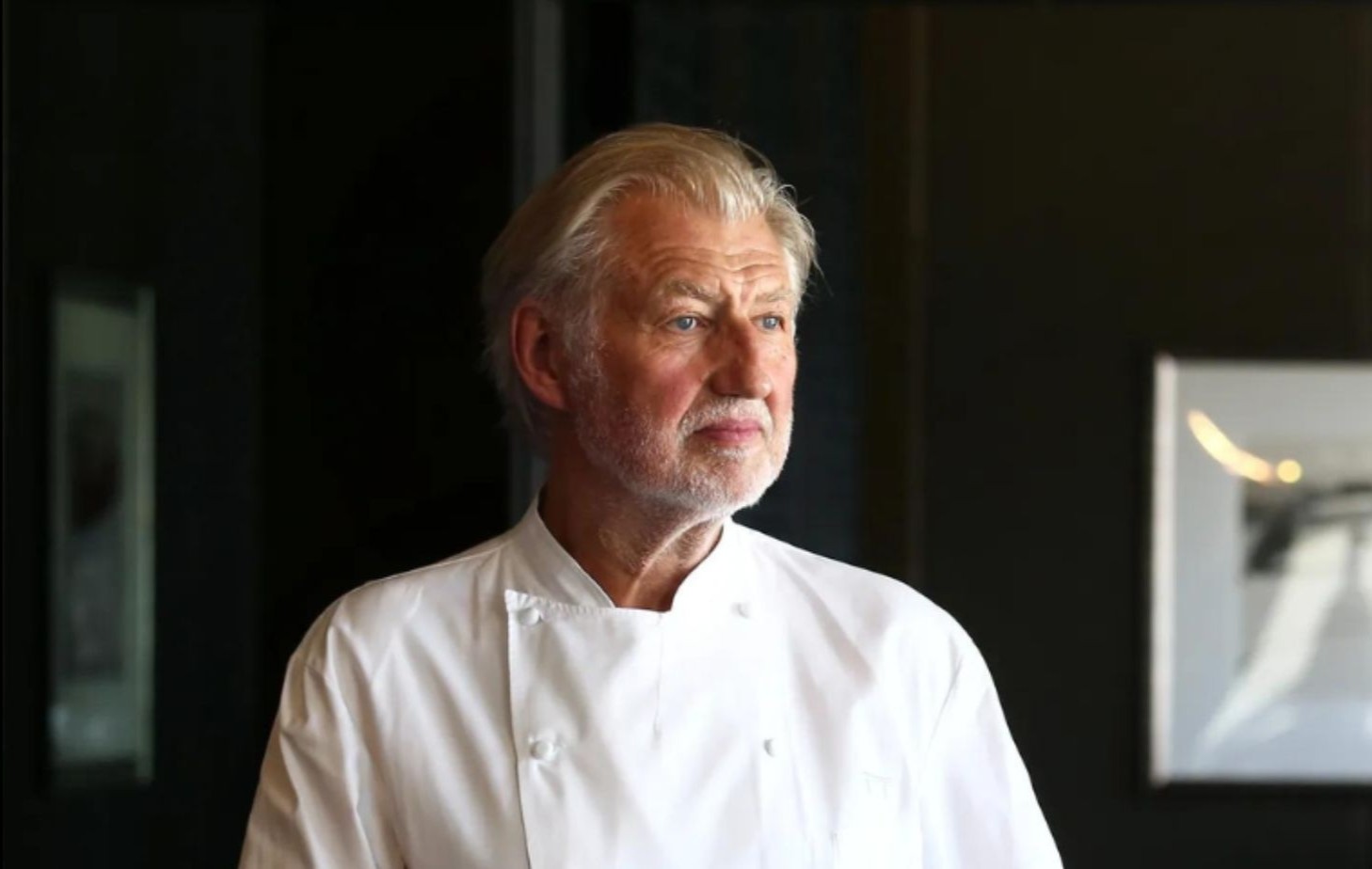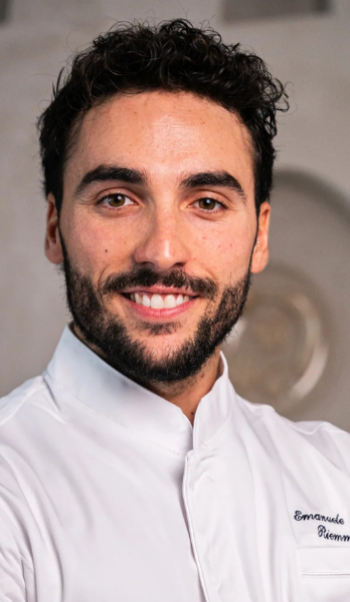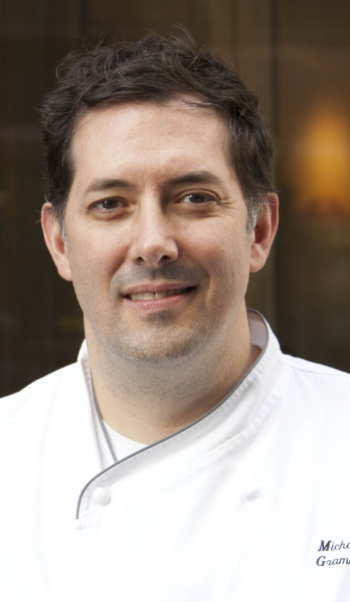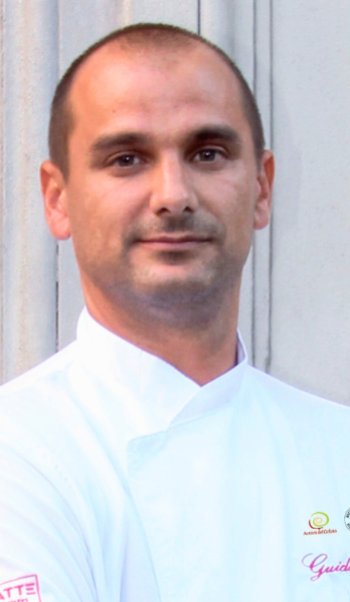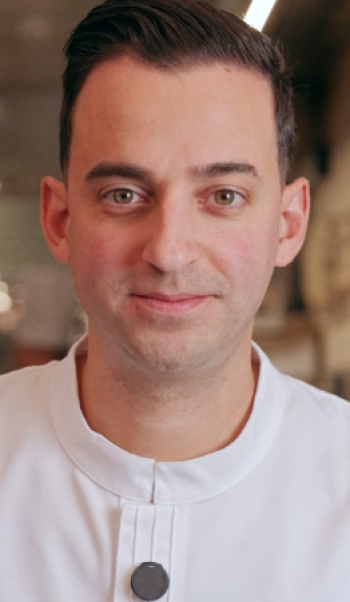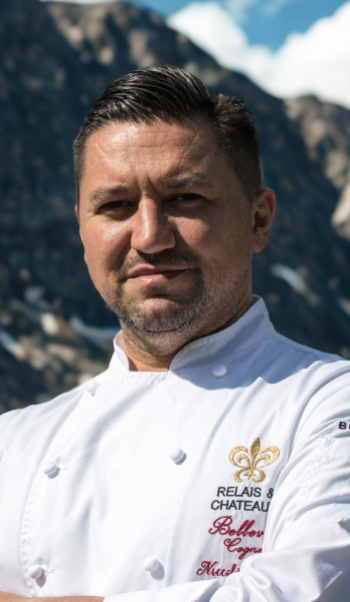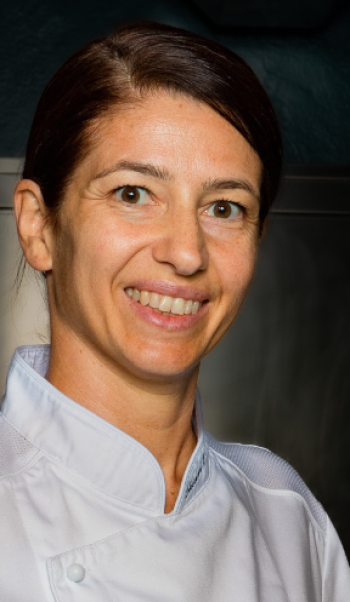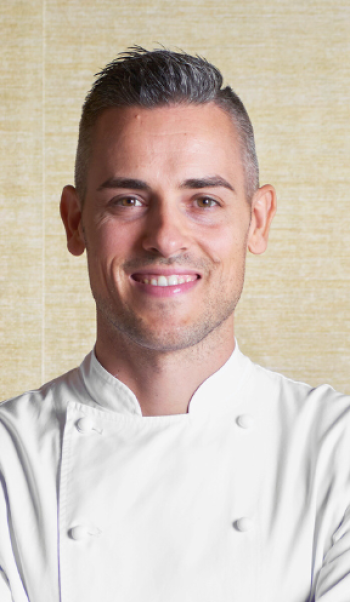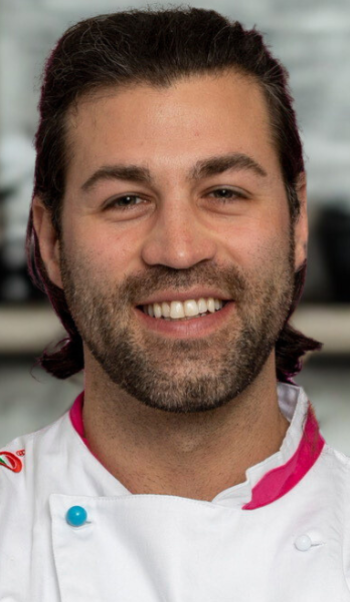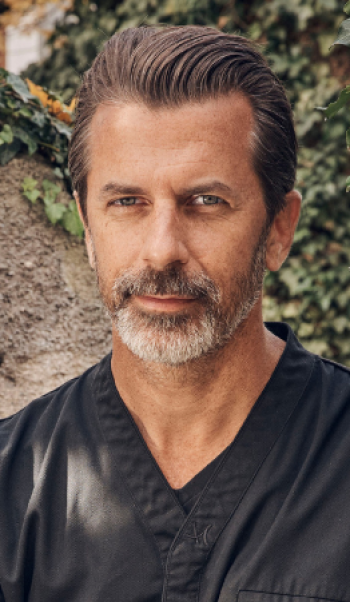Say "legend" and you see Pierre Gagnaire: 15 restaurants and 12 MICHELIN Stars to crown his many achievements. A global success for a true culinary artist who initially wasn't even that enthusiastic about his father's legacy. "Put in front of a stove without truly desiring it, I immediately embraced cooking, and techniques embraced me," talented and charismatic, Pierre was destined for success.
Pierre Gagnaire was born on April 9, 1950, in Apinac, in the Loire region. His father is an established restaurateur, at the helm of "Clos Fleuri" in Saint-Priest-en-Jarez. Since childhood, the refrain at home has been singular: "You will become a chef and take over the family establishment." To be honest, he doesn't show much enthusiasm, yet he obediently resigns himself to what seems like a predestined fate and starts helping out in the pastry kitchen. Followed by his initial experiences here and there: a summer with Paul Bocuse, a stint in Lyon with Jean Vignard, who had already trained Alain Chapel and of whom he would be the last apprentice. A master of cooking techniques, it intrigued him but didn't captivate him entirely. He continues his education, discovers new culinary houses, yet still struggles to find excitement.
In 1973, at the age of twenty-three, he returns as a prodigal son to Saint-Priest-en-Jarez, where his father has held a MICHELIN Star for several years. Around him, the French culinary scene is in upheaval: a group of young chefs is challenging established gastronomy, supported by agitators Henri Gault and Christian Millau. The even younger Gagnaire is intrigued by the audacity of Paul Bocuse and Alain Chapel, Jean and Pierre Troisgros. While not aligning strictly with the nouvelle cuisine movement, he begins to understand that a different style of dining is possible. Cuisine can truly be art.
With this spirit, in 1981, he opens his restaurant in nearby Saint-Étienne, inside an old photographer's studio, where he unleashes his creativity. "Often, I felt like a pot with the lid closed: boiling inside. Cooking gained true value in my eyes when it stopped being a blind repetition of learned practices. The act of cooking became a daily happiness when I dared to refuse to turn cooking into a stagnant chant, repeated the same way every day."
Critics quickly notice him; one and then Two MICHELIN Stars arrive, already in 1986. The audacity of a cuisine that practices contrasts and collisions of flavors, expertly orchestrated twists in the narrative, syncopation and suspense, leading to dissonance, is striking. Some compare Gagnaire to an old jazz musician for his improvisational ability on old standard themes. Such genius deserves a new setting: in 1992, Gagnaire moves to an ancient hôtel particulier, which he embellishes like an art gallery with the help of his painter and sculptor friends. The MICHELIN Guide rewards him with a third Star.
"My story began in Saint-Étienne. Continuing to explore without constraints means staying true to oneself, being loyal to friends, clients, the city, and my team. It's about building a real place for the future and creation in Saint-Étienne." However, the dream shatters due to harsh conditions: located in a working-class environment, lacking traditions and spending capacity, the acclaimed restaurant closes its doors in 1996. Gagnaire claims to be a victim of "a sort of banking cynicism" and upholds his idealism. "I learned that freedom is money, but I no longer had the means to carry out my work."
Only a change of location remains: Paris calls to him, and he accepts the challenge, but with renewed and more aware spirit. "My cuisine has become simpler. It's made of bits of string, small things, modest touches. I want to dislodge people, surprise them, offer them sensations. It's better executed, less experimental, more thoughtful, and better constructed. The idea for the sake of the idea no longer interests me." MICHELIN is convinced as well, promptly reinstating his second and third Stars in 1997 and 1998.
Those fortunate to work alongside him describe an uninterrupted creative process that leads him to rethink dishes even during service: the pot still boils. He finds a partner in scientist Hervé This, founder of molecular gastronomy, collaborating on defining a "note-by-note" cuisine based on the combination of compounds and molecules rather than ingredients. Together, they author masterpieces like "Culinary Art and Science of Cooking" and "Note-by-Note Cooking". The meal thus becomes an alchemy of science and art, an unparalleled fusion of music and rhythm, vision and passion. In 2003, Pierre is named a Commander of Arts and Letters, and in 2006, a Knight of the Legion of Honor.
The chef who was once overwhelmed by financial turmoil also reveals himself as an unexpected businessman over the years. In 2002, he opens "Sketch" in London, followed by a second Parisian establishment in 2005: "Gaya Rive Gauche". The same year, he begins exploring the Asian scene by opening a "Pierre Gagnaire" in Tokyo, which he had visited in 1986; a year later, he opens another in Hong Kong at the "Mandarin Oriental Hotel", and in 2008, one in Seoul. In 2009, he sets foot in Las Vegas with "Twist", again within the "Mandarin Oriental Hotel". Then "Les Menus" in Moscow and "Colette" in Saint-Tropez. In 2011, amid accolades for his talent (2 MICHELIN Stars arrived in Hong Kong), Pierre becomes a grandfather to his first grandchild.
The chef never stops: he opens in Berlin, Dubai, Bordeaux, Shanghai, Courchevel, Nîmes, and the latest, in 2022, in Aix-en-Provence, amassing Stars upon Stars. In total, by 2023, he has fifteen restaurants and Twelve MICHELIN Stars, but surely, the surprises are far from over.
